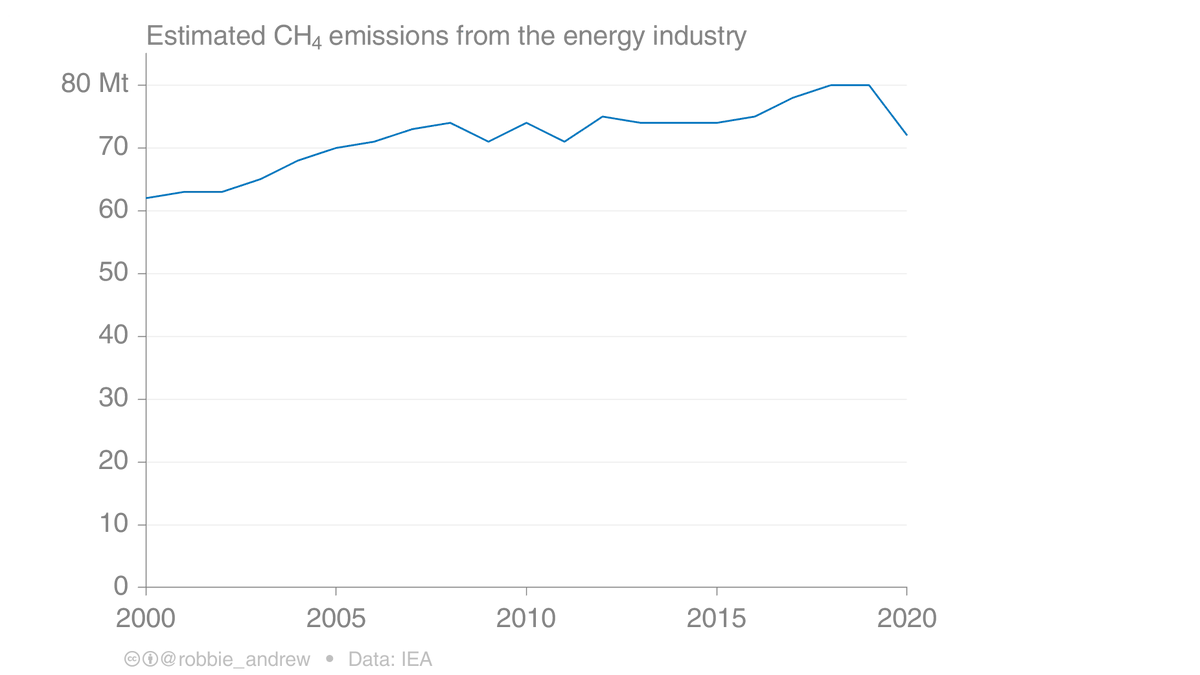"NOAA’s preliminary analysis showed the annual increase in atmospheric methane for 2020 was 14.7 parts per billion (ppb), which is the largest annual increase recorded since systematic measurements began in 1983."
https://research.noaa.gov/article/ArtMID/587/ArticleID/2742/Despite-pandemic-shutdowns-carbon-dioxide-and-methane-surged-in-2020">https://research.noaa.gov/article/A...
https://research.noaa.gov/article/ArtMID/587/ArticleID/2742/Despite-pandemic-shutdowns-carbon-dioxide-and-methane-surged-in-2020">https://research.noaa.gov/article/A...
Preliminary analysis of carbon isotopic composition of CH₄ done by INSTAAR indicates it is likely that a primary driver of the increased CH₄ burden comes from biological sources such as wetlands or livestock rather than thermogenic sources like oil and gas production and use.
IEA estimates that methane emissions in the energy industry declined by about 10% in 2020.
https://www.iea.org/reports/methane-tracker-2021">https://www.iea.org/reports/m...
https://www.iea.org/reports/methane-tracker-2021">https://www.iea.org/reports/m...
Piece from the @FT on the methane rise with quotes from methane researchers. https://twitter.com/FT/status/1379898871548088321">https://twitter.com/FT/status...
It& #39;s not easy to distinguish methane sources.
"Ruminant [livestock] emissions are isotopically almost indistinguishable from wetland emissions. 𝗔 𝗰𝗼𝘄 𝗶𝘀 𝗮 𝘄𝗮𝗹𝗸𝗶𝗻𝗴 𝘄𝗲𝘁𝗹𝗮𝗻𝗱 𝗮𝘁 𝟯𝟳°𝗖." https://agupubs.onlinelibrary.wiley.com/doi/full/10.1029/2018GB006009">https://agupubs.onlinelibrary.wiley.com/doi/full/...
"Ruminant [livestock] emissions are isotopically almost indistinguishable from wetland emissions. 𝗔 𝗰𝗼𝘄 𝗶𝘀 𝗮 𝘄𝗮𝗹𝗸𝗶𝗻𝗴 𝘄𝗲𝘁𝗹𝗮𝗻𝗱 𝗮𝘁 𝟯𝟳°𝗖." https://agupubs.onlinelibrary.wiley.com/doi/full/10.1029/2018GB006009">https://agupubs.onlinelibrary.wiley.com/doi/full/...

 Read on Twitter
Read on Twitter



